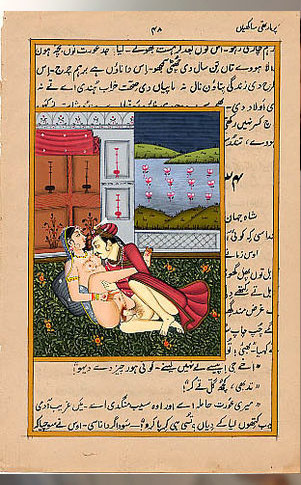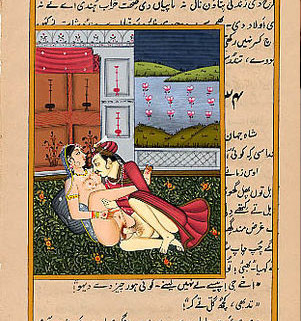Is Tantra Just Sex? Exploring the Spiritual and Sexual Energies Within
In today’s fast-paced and stress-filled world, many people are seeking ways to reconnect with themselves and find inner peace. While traditional yoga and meditation practices can be helpful, some individuals are exploring alternative paths to spiritual growth and transformation, including Tantra. Tantra is a complex and often misunderstood philosophy that combines spiritual and sexual practices to awaken the dormant energy within the body and achieve enlightenment. We are happy to have the chance to invite the tantra goddess – Sherry from Kama Massage to share her idea about “xploring the Spiritual and Sexual Energies Within” In this post, we will discuss about tantra and sex and delve deeper into the origins of Tantra, the role of sexual energy in this philosophy, and the practices that can be used to cultivate the Kundalini energy and achieve a higher state of consciousness.
Tantra Yoga has a rich history dating back at least 2,000-10,000 years, and is an oral and written tradition that encompasses a spiritual science and way of life. While many in the West tend to associate Tantra with sex, in reality it is more concerned with approaching every activity with artful intention, and achieving a harmonious and masterful balance in all aspects of life.
It is a common misconception that Tantra and the Kama Sutra are interchangeable. The Kama Sutra, though rooted in Tantra, is merely a book that has undergone multiple translations and revisions, often for the purpose of imposing certain sexual standards. As a result, the original teachings of Tantra have been diluted and obscured over time.

At its core, Tantra is about embracing all aspects of life and finding the middle path. It does not advocate for hedonistic indulgence that depletes one’s life force, nor does it promote an unrealistic, saint-like existence that excludes the lower chakras, bodily functions, and basic needs. Rather, Tantra encourages a balanced and mindful approach to living that embraces both the spiritual and physical aspects of life.
Contrary to Western misconceptions, being Tantric does not require multiple partners or any partner at all. In fact, there are many single and celibate Tantricas who embody the principles of Tantra in their own way. The desire for transformation, empowerment, and enlightenment is all that is needed, as the innate potential for Tantric practice is within every individual.
The word Tantra is derived from the Sanskrit root word “tan,” meaning “to extend, expand, spread, continue, spin out, weave; to put forth, show, or manifest.” This encompasses all aspects of life, including thoughts, actions, and physical matter. Tantras are sacred scriptures of both Buddhism and Hinduism, serving as the foundation of Tantra philosophy. Tantra can also be viewed as a mystical teaching through dialogues between divine masculine and feminine energies, such as God and Goddess or Shiva and Shakti. Some of these dialogues have been recorded in Tantras, such as the Kula-Arnava-Tantra. Shiva is often attributed as the divine author of many Tantras.
One key aspect of Tantra, according to Yoga scholar Georg Feuerstein, is the recognition of sexual energy as a valuable resource that can be channeled to enhance spiritual growth rather than blocked through orgasmic release. In Tantric teachings, sexual energy is viewed as a transformative and creative force that should be embraced rather than shamed. It is believed that through the sacred lovemaking of Shiva and Shakti, the entire universe was born. This teaches us to listen to our intuition instead of societal conditioning and realize that wholeness is within our reach, accessible in the present moment. (Learn more about tantra and tantric massage at TMG)
The practice of Tantra involves the cultivation of sexual energy for transformation, but the process is different for men and women. Shiva represents consciousness and his life force runs from bottom to top in men. By practicing ejaculatory retention, men can stimulate the higher centers, activating them. On the other hand, Shakti represents energy, and her energy runs from the crown of the head to the base of the spine in women. Women often have a stronger libido than men, and they are conduits by which spirit is born into matter.
When Shiva and Shakti are in sexual union, their energy creates an endless circuit that connects with the highest part of the soul, which is connected to the infinite universal consciousness or Ultimate Reality. This metaphysical bridge that exists within all of us is known as Kundalini, which is both spiritual and sexual energy. Kundalini is often awakened through Tantric practices, such as nadi shodhana, but spontaneous awakenings have also been recorded. However, these awakenings can lead to painful physical and psychological conditions, and even death.
Kundalini awakening is not just about sex, but involves a whole range of yogic practices, including breathwork, mantra, meditation, and physical yoga postures, among others. These practices help to prepare the body and mind for the awakening of the Kundalini energy, and to guide it safely up the spinal column to the crown chakra. It’s important to approach Kundalini awakening with caution and respect, and to work with an experienced teacher or guide who can offer guidance and support throughout the process. The ultimate goal of Kundalini awakening is to achieve a state of oneness with the divine, and to experience the infinite bliss and wisdom that comes with this realization.
In conclusion, Tantra is a spiritual practice that involves the use of sexual energy as a means of transformation, empowerment, and enlightenment. It is not limited to a specific number of partners or even the presence of a partner at all. Both men and women have different approaches to cultivating sexual energy, and Kundalini is an important aspect of Tantra that needs to be approached with caution and intention. Ultimately, Tantra is about uniting with oneself and the divine within, and it can be approached through various paths and practices, including yogic breath, mantra, and physical asanas.



